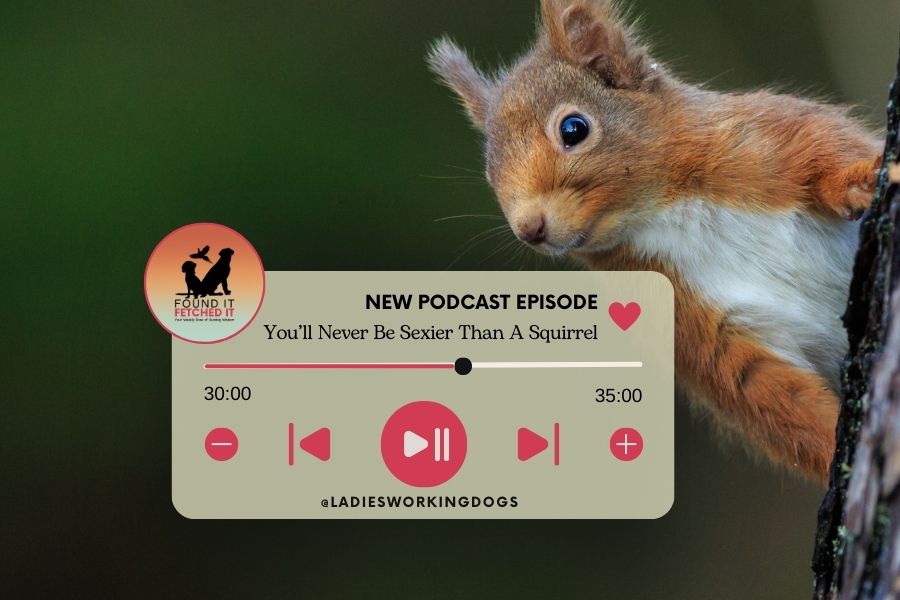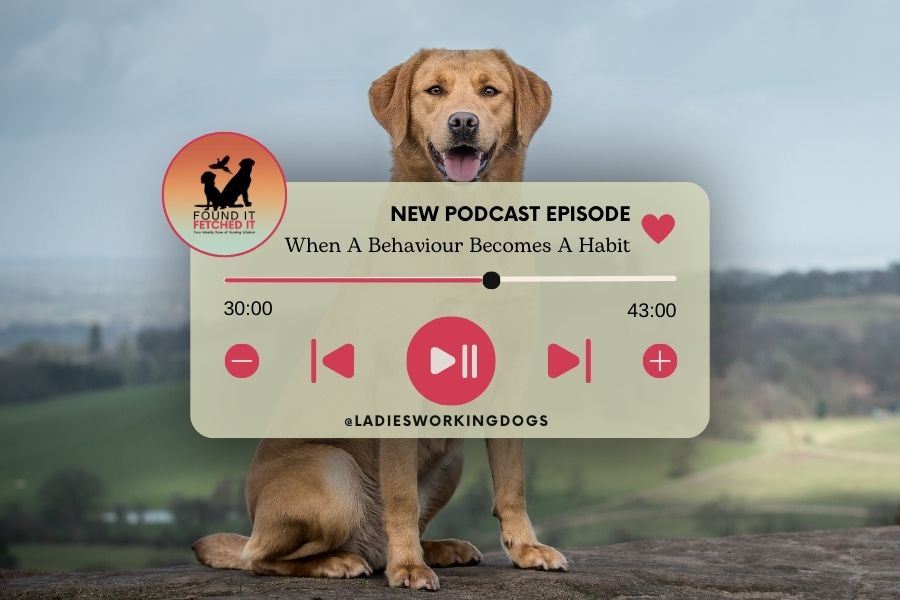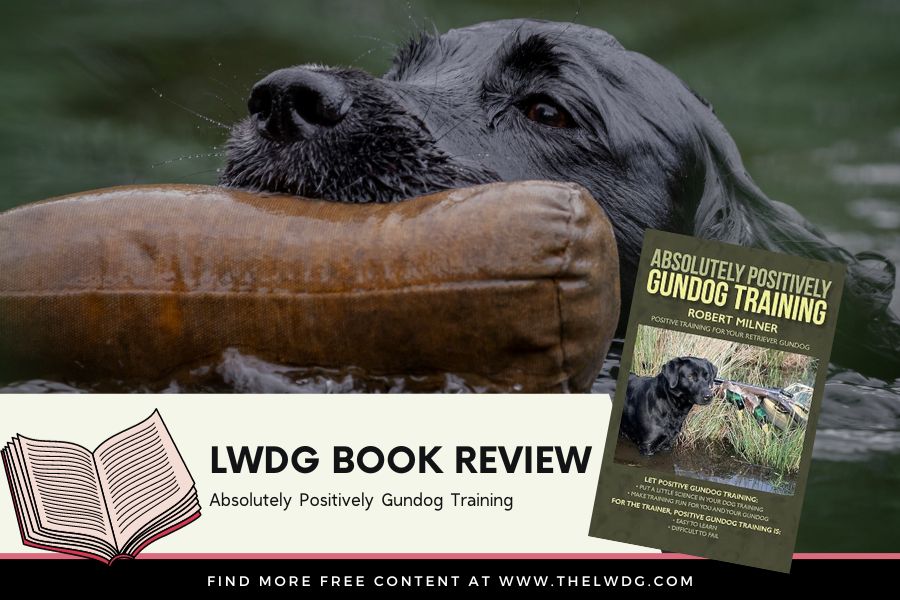As always, the summer holidays are over in the UK, and the rain has stopped, replaced with scorching sun. As responsible owners, it’s essential we arm ourselves with knowledge about how different weather conditions can influence our gundogs’ behaviour, energy levels and overall health. This isn’t merely about training routines; it’s about equipping ourselves with the understanding of ground versus air temperature to ensure our dogs stay safe and happy when outside no matter the weather.
The Difference Between Air and Ground Temperature
When assessing the weather conditions for our dogs, many of us tend to focus solely on the air temperature, often forgetting that the ground temperature can vary significantly. We look on our app, or on the internet, but these can massively affect our understanding and choices as we only see air temperature.
It’s crucial to understand this contrasting information as the air and ground temperatures can impact your gundog differently, and both are significant. Air temperature is what we usually refer to when we talk about the weather. However, ground temperature, the temperature of the surface where our dogs walk, run, and sit, can be much hotter or colder than the air above it.
For instance, on a really sunny day, the pavement can absorb heat and become scorching, potentially causing discomfort or burns to our dogs’ paws, even though the air might not feel as hot to us.

When the weather gets warmer, it’s essential to be extra cautious and take preventive measures to keep our dogs safe. Many of us may instinctively think that keeping our dog in a shaded area is enough; however, it’s essential to also be mindful of the ground temperature as it can easily exceed what our senses can detect.
For instance, on a hot day, asphalt pavement may reach temperatures up to 50°C, which could potentially become incredibly dangerous for our dogs.
A common sight in countryside regions is sheep resting on roads during dusk. The explanation for this relates to the comparison in warmth between the road and the surroundings. When the sun goes down, the air becomes colder much faster than the earth does. Roads, particularly those made of asphalt or concrete, keep their heat longer than areas covered in grass. This makes a ‘warmth comparison’, with the road staying hot while the area around it gets colder. As a result, sheep, looking for the lingering heat of the road, decide to lie on it when the evening is cool. This action is a clear instance of how contrasting temperature situations can influence how animals interact with their environment.

To help protect your pet from potential burns, it’s best to avoid prolonged walking on hot asphalt or concrete pavements. If at all possible, try and find grassy areas for your dog to walk on or take them out early in the morning or late in the evening when both air and ground temperatures are cooler.
In opposite, in colder climates, the ground can retain cold more than the air, leading to cold surfaces that can chill your dog. Imagine your gundog lying down on a cold surface for an extended period during the training; it can lead to hypothermia, even if the air temperature doesn’t seem dangerously low.
Understanding these differences is of great importance, as it equips us with the knowledge to make informed decisions about when and where we should train our dogs. Always remember to check the ground temperature as well, in addition to the air temperature, when planning your gundog activities.
How Air Temperature Affects Dogs
Just like humans, dogs are susceptible to extreme air temperatures, which can pose serious risks and challenges to their health and well-being. During hot weather, dogs can suffer from heatstroke, a dangerous condition that occurs when their bodies can’t cool down effectively. Symptoms include heavy panting, drooling, increased heart rate, and lethargy.
To prevent this, ensure your dog has access to shade and fresh water, and avoid strenuous exercise during the hottest hours of the day. Cooling mats, cooling coats paddling pools, access to water both to drink and play and dog-appropriate sunscreen can also be beneficial.
Conversely, cold air temperatures can pose just as many challenges for dogs, especially smaller ones, short-haired breeds, and puppies. Hypothermia, where a dog’s body temperature drops below normal, is a common risk during cold weather, with symptoms such as shivering, lethargy, and weak pulse. Frostbite, although less common in dogs, can affect areas with less fur such as the tail, ears, and paws.
To protect your dog during cold weather, consider using dog-appropriate clothing like sweaters and boots, limit time spent outside, and provide a warm bed away from draughts. Always monitor weather conditions and adjust your dog’s care accordingly to keep them safe and comfortable no matter what the weather throws your way.
Understanding the Impact of Ground Temperature
Ground temperature plays a substantial role in your dog’s comfort and health, particularly as it pertains to their paws. Unlike humans, dogs can’t wear shoes to protect their paws from the hot or cold ground, and different surfaces can significantly influence the ground temperature. For instance, sand, even though it doesn’t retain heat as well, can still become hot enough to be uncomfortable, as can grass in direct sun. On the other end of the spectrum, snow and ice can lead to cold-related injuries like frostbite, especially in the sensitive areas of the paws.
To ensure your dog’s paws are protected from regular extreme ground temperatures, consider using dog boots. They provide a barrier between your dog’s paws and the ground, shielding them from hot pavement or icy paths. If boots aren’t an option, paw balms can also be beneficial as they form a protective layer on your dog’s pads, preventing burns and abrasions. Regardless, it’s crucial to regularly check your dog’s paws for any signs of injury or discomfort, and always consider the ground temperature when planning any outdoor activities with your dog.
You can look at a website like Soil Temperature to roughly gauge, however, bear in ming this is for soil NOT pavement or concrete.
As a general rule, when the ground temperature is too hot or cold for your own comfort it’s likely too extreme for your dog as well. By practising caution and taking extra measures to protect them in extreme weather conditions, you can ensure they stay safe and comfortable no matter the season. If you take off your footwear and find the ground too uncomfortable for your feet, it’s time to take the same precautions for your dog!

Empowering Gundog Owners with Actionable Tips
To effectively manage air and ground temperature challenges, here are some practical and actionable ideas every pet owner can utilise:
- Monitor Weather Conditions Regularly: Keep an eye on the daily weather forecast. During extreme weather conditions, limit your dog’s outdoor activities. Remember, if it’s too hot or cold for you, it’s likely the same for your pet.
- Modify Exercise Routines: During hot summer days, consider exercising your dog early in the morning or late in the evening when temperatures are cooler. In winter, shorter and more frequent walks can help to limit exposure to the cold.
- Use Appropriate Gear: Invest in weather-friendly gear like cooling vests for hot days and warm coats for cold days. Protective boots can shield your dog’s paws from hot pavement or icy paths.
- Create a Comfortable Indoor Environment: Ensure that your home temperature is comfortable for your dog. Provide cooling or warming bedding depending on the season.
- Encourage Community Support: Join or create a pet owners’ community where experiences, questions, and advice can be shared. This can be a valuable resource in navigating weather-related challenges.
Remember, our dogs rely on us for their comfort and safety. By proactively managing temperature challenges, we can ensure they remain happy and healthy, no matter the weather conditions.
Ensuring Your Dog’s Comfort, No Matter the Weather
In conclusion, it’s important to recap that air and ground temperatures can vary significantly and can affect your dog’s comfort and well-being. Weather challenges are a constant part of being a pet owner. However, by understanding the differences between air and ground temperatures, and how each can impact your dog, you’re empowered to make the best decisions for your dog’s well-being.
We encourage you to join the LWDG. Not only will you gain access to a wealth of resources and expert guidance, but you’ll also be part of a community that understands and supports your journey. Remember, we’re stronger together in ensuring the happiness and health of our pets, come rain or shine.
What’s Your Gundog Goddess Style?
Who’s ready for some extra fun? Discover your unique approach to training with our “Which Gundog Goddess Are You?” quiz. You don’t want to miss this one
Click Here To Take The Quiz













































